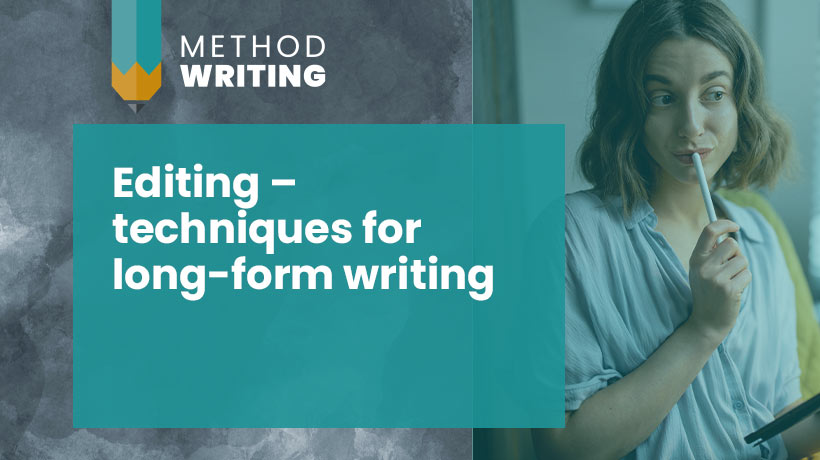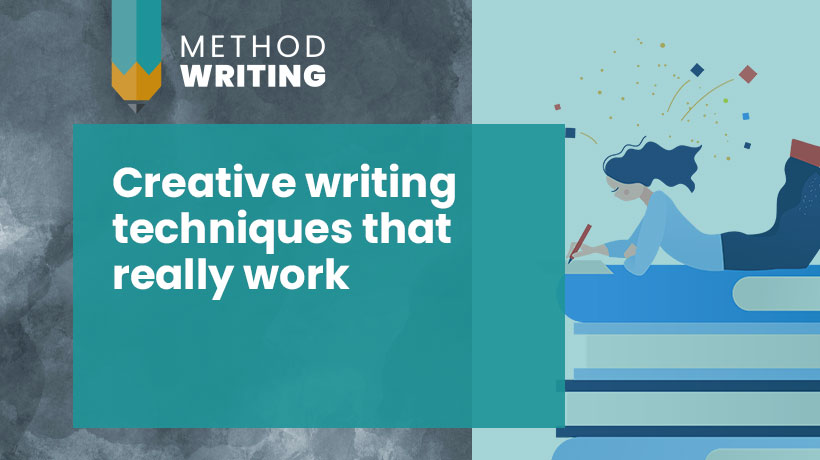Creative writing techniques that really work
Creative writing techniques are hard to pin down, as writers are all so different. But which are useful to the beginner? Here are 5 practical techniques that my creative writing students have found most helpful.
1. Beginning, middle, end
This is a well-worn writing mantra, but what does it really mean? Every piece of writing begins and ends, after all. So just having a ‘beginning, middle and end’ itself isn’t enough. It’s the quality of each that counts.
The beginning has one job to do, and that’s to pull the reader in. It’s a bit like inviting someone to dance, old-style. You need to attract their attention, take them by the hand, and lead them onto the floor.
Once you’ve got their attention and persuaded them to stay with you, the middle begins. Stories are essentially a character’s journey from A to B, with obstacles in the way. So the middle, too, has an underlying shape that pulls the reader through. As long as you create that sense of narrative traction, the reader will stay with you.
Endings are the feeling the reader goes away with. They have an impact way out of proportion to their length. Imagine a theatre audience going out into the night, and the feelings they carry with them on the way home. The chat and discussion they’ll have with each other. The thoughts that mill in your head. That’s the job of the ending.
Thinking about “beginning, middle and end” in an experiential way like this is a useful technique for helping you to focus on the reader.
You’re building a relationship, not just transmitting information. Try thinking of seduction, sustain and farewell, rather than beginning, middle and end.
Read on for more about each element.
2. Writing a strong start
Creative writing techniques often mention story hooks. It’s true – you do need to attract the reader’s attention. But a hook doesn’t need to be a big, flashy event. It just needs to intrigue the reader into reading on. That’s its main job.
So, does your first paragraph intrigue the reader? Does it create tension, ask a question or arouse curiosity in some way? Does it have a visual element that starts to build the world for the reader?
The commonest problem I see is story openings with far too much information. For example, the writer has introduced three or four characters in the first paragraph. Or, they’ve written a page in one character viewpoint or location, then hopped quickly to another.
It’s as though the writer is so excited and full of ideas that everything spills out at once.
But too much information at once can overwhelm the reader. It takes time for readers to settle into a story, tune into it properly, and to get to know characters.
Writers need tight control of how information unfolds. Think of leading the reader on a journey, rather than bombarding them in a scattergun way.
It’s often helpful for writers to concentrate on just “three things”, to give their opening a tight focus. A character, a place, an object.
And then a direction of travel or transformation – from x to x.
This clarity will give you the foundation for writing a scene. The narrow focus will help the reader to get to know the character more easily. A single compelling character in the opening paragraph is more engaging than three or four glanced over.
3. Write a mighty middle
Creative writing techniques for the middle of stories are hard to pin down. However, a lack tension is by far the commonest problem. This happens even in stories with loads of action. In fact, high-action stories without character change can be the most boring and lifeless of all.
The middle of a story needs character change, pivot or transformation. If this doesn’t happen, the story is linear – in a straight line. Even if there’s plenty of action, and an escalating plot, it’s still linear.
Structurally, this kind of story is more like a report or anecdote.
In a well-shaped story, the story has a major hinge or turning-point where the character undergoes a significant transformation.
They do this by confronting challenges, and emerging changed from the encounter. If they don’t evolve in this way, it’s hard to connect deeply with them as readers. And it’s hard to care. A story without a character change doesn’t have a point. It’s just a list of events.
A feeling of connection comes from identifying with the character at some level, and experiencing some of their inner conflict and change by proxy.
To create a mighty middle with this kind of change, it can be useful to think of stories as having a ‘beginning, muddle, end’.
If you make the middle messy for your character, giving them inner as well as outer conflict, they can grow and show what they’re made of.
To do this, put them under pressure. Give them a tough decision to make. And make sure the stakes are high.
Choices determine character. Give your character difficult choices, and the middle will have the knotty quality it needs for a strong story shape.
For example, your heroine wants to leave their hometown to pursue their dream. But to do this, they need to leave their loved one behind. What do they decide? This kind of dilemma is at the heart of the movie It’s a Wonderful Life.
4. Write a resonant ending
The ending is the impression your readers are left with. It leaves a disproportionate effect on how they feel about your book. So it needs really careful thought.
Note – the end of a narrative isn’t the same as the climax.
The climax is the high point of the action – say, when the hero says goodbye to his lover, or the evil antagonist dies.
After this high point, the reader needs “comedown” time. Time to process events. If the story ends too abruptly, the reader won’t feel satisfied.
If the high point is the climax, think of the ending as the afterglow.
This doesn’t mean tying all the plot strands off neatly. It just means giving a sense of closure, to ease the reader out of the story world.
Think about how you want your audience to feel when they finish reading. Thoughtful? Happy? Devastated? Bereft?
Read the endings of your favourite stories and analyse them.
How do they make you feel? How has the writer achieved that effect?
Of course, the final moment needs to be “earned” through the story as a whole.
But the very last sentence and paragraph have a disproportionate effect on how readers feel on leaving the story.
So consider the emotional tone you want to leave in the air.
Even the very last word can transform the reader’s experience. I once heard a radio play about a curmudgeonly old judge who seemed to have a difficult relationship with his wife. But his very last word to her was “darling”. In a single word, he redeemed himself. The author left us with a feeling of hope about the characters. It was a tremendously powerful choice.
It’s often effective to write an ending which has a sense of opening out or possibility. That way, the story can stir questions in the reader, and resonate on in their minds.
For example, a departure is the start of a new journey. Closing a shop opens up a new phase of life. See if you can find a way to introduce a note of “onwards” to extend the life of your story in your readers’ minds.
5. Use objects to dramatise story action
One of the most powerful creative writing techniques I teach is how to use objects in your fiction. Objects big and small are a great way to bring a story to life, and dramatise the action and conflict between characters. Whether big objects such as houses, cars, sofas or trees, or small objects such as rings, books, feathers or eggs, they can have great power.
Why objects are powerful in storytelling? Because they’re external to the characters. When you put the characters on opposite sides of the object, you’ve instantly created a dynamic relationship.
For example: both characters want the ring with equal passion. Or, one character wants to protect the egg, the other to break it and eat it. One character can read the secrets in the book. The other can’t, but wants to.
Right away, you’ve created conflict between the characters.
Try starting a story just with an object and two characters. Choose an object and brainstorm verbs that characters can use to interact with it (eg throw, lose, break, discover…).
Try pairing the verbs with actions of opposite force (throw/catch; break/mend; lose/find; discover/conceal). Maybe these actions can bookend the story?
Using objects with verbs like this is a way of dramatizing internal conflict. Think of the movie The Piano and the way the piano is used in different ways, broken apart, floating, and even played as an instrument!
Objects can also be used in rituals. Rings and birthday cakes are classic examples. So are gifts, crowns, and many kinds of clothing.
Familiar rituals are useful because they can act as a handy shorthand for the status quo.
We all know what a typical birthday or archetypal wedding is meant to be like. That’s why a “disruption at the wedding” scene creates strong tension in movies.
Look at the objects associated with familiar rituals and see whether you can disrupt their use in a new way.


